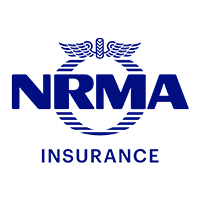Key takeaways
- A no claim bonus is a discount you'll receive on your car insurance premium for each year that you don't make a claim.
- If you make weather-related claims or accident claims where you were not at fault, your bonus won't be reduced.
- Learn more about how it works, how much money can you save, which insurance companies offer it, if it's worth it, and more in our guide.
How does the no claim discount work?
In Australia, a no claim bonus works like this:
- Each year you hold car insurance and don't make a claim, your no claims discount rating goes up, making your car insurance premiums cheaper.
- After five years, you usually reach Rating 1, which is the maximum NCD discount available. In some insurers this might also be called Rating 5.
- Your bonus will be reduced by two years if you need to make a claim.
Generally, your bonus won't be reduced for claims where you were not at fault. This means you can still make weather-related claims or accident claims where the other driver was clearly at fault without losing your no claim bonus.
Providers may also offer no claim discount protection which let you make a specific number of at fault claims without it impacting your rating. You can check with your provider or take a look at your insurance certificate to find out whether you have one.
The exact types of claims you can make without losing your bonus will be different depending on the insurer, so it's a good idea to look at this if you're planning on growing a no claim bonus.
When you switch car insurance, it's also worth looking at whether your new insurer will recognise your no claim bonus.
How much can you save per year with a no claims discount rating?
Some insurers may offer different percentages off, but generally you'll find that they follow the structure laid out in the table below. This is an indication of what discount you are likely to receive, based on car insurers underwritten by Auto & General Insurance, but may differ between individual insurers. It's also worth noting that often the discount will only apply if your premium reaches a minimum amount. If you're premium is below the minimum amount then you won't receive the discount.
Claim-free years | No Claims Discount Rating | Discount |
|---|---|---|
5 | 1 | 15% |
4 | 2 | 12% |
3 | 3 | 9% |
2 | 4 | 6% |
1 | 5 | 3% |
0 | 6 | 0% |
Last updated July 2024
Which providers offer a no claims discount (NCD)?
Listed below are some of the insurers offering no claims discount.
Insurer | % No Claims Discount |
|---|---|
up to 65% | |
up to 60% | |
up to 70% | |
up to 55% | |
up to 60% | |
up to 15% | |
up to 65% | |
up to 15% | |
up to 15% | |
up to 20% | |
up to 60% | |
up to 60% | |
up to 60% | |
up to 65% | |
up to 65% | |
up to 70% | |
Not stated | |
Not stated | |
Not stated | |
Not stated | |
Not stated | |
Not stated |
Last updated July 2024
Pros and cons of a no claim discount (NCD)
One of the big questions to ask yourself before taking out car insurance is whether you even want to bother with the no claim bonus. It's a discount, but the obvious downside is that you'll risk losing it if you have to make a claim, so it might stop you from getting full use out of your car insurance. To see if it's worth it for you, we've laid out some of the pros and cons.
The pros
- Can get you a significant discount
- Can be protected with various cover options
- Will not necessarily be lost if you have to make a no-fault claim
The cons
- They're designed to deter you from switching insurers, which is typically how you save money
- Can limit the range of policy types, options and insurance brands available to you
- No-claim protection options come at an extra cost
- Sometimes policies that feature a no claim bonus are not necessarily the most cost-effective options
- It doesn't guarantee your premiums won't go up
Is it worth paying to protect a no claim bonus?
A protected no claim bonus is an extra-cost option you can add to your cover. It works differently depending on the insurer, but generally it will let you make up to two claims without losing your no claim bonus.
Your insurer will typically offer this once you've been with them for at least two years without a claim.
Whether you choose to get it is entirely up to you, but you should note the following:
- This feature simply protects your discount, and your premiums are still going to increase following a claim.
- It makes your car insurance more expensive since you are paying to keep a discount.
- It's only available when you stick with the same insurer for a while.
Like the no claim discount itself, this feature encourages people to stick with the same insurer, or group of insurers, rather than shop around.
For a fairer comparison, you might want to factor this into the prices when you're comparing car insurance quotes.
If protecting your no claim bonus means you're paying more for car insurance than you would with a provider that doesn't offer this discount at all, then it might be time to make a switch.
How to find out your no claims discount rating
In most cases, you can see your no claim discount (NCD) by doing the following:
- Logging into your online car insurance account
- Referring to your insurance certificate; many specify your no claims discount rating
- Viewing your car insurer's latest renewal offer
- Calling your car insurer and speaking to them directly
Do you keep your no claims discount rating if you switch policies?
Some insurers let you include your existing no claim discount rating as part of a new policy. However, this is usually only if you have the same car. If you haven't driven for a few years, it's unlikely you'll be able to keep your no claims discount (NCD).
If you can keep your NCD, you'll need to provide your new insurer with proof of it. You should be able to find this on a renewal notice. Otherwise, you might need to contact your previous insurer and ask them to pass on your NCD information.
Frequently asked questions
Ask a question
More guides on Finder
-
Car insurance for hybrids
Compare hybrid car insurance quotes.
-
Is it illegal to…? Your driving questions, answered.
Do the police have quotas to meet? Is it legal to eat while driving? Find the answers to these and other driving myths.
-
Blue Slip NSW
Your guide to Blue Slips.
-
Do demerit points affect your car insurance?
Your guide to demerit points and how they affect your car insurance.
-
CTP insurance in Tasmania
Your guide to CTP car insurance in South Australia.
-
CTP insurance in Queensland
Your guide to CTP car insurance in Queensland.
-
Making a car insurance claim for a hit and run incident
Everything you need to know about car insurance claims when your vehicle is damaged in a hit-and-run.
-
Car insurance for 4WDs
Complete guide to getting car insurance for your 4WD vehicle to keep secure on and off the road.
-
Car insurance for high performance cars
Complete guide to getting car insurance for high performance vehicles. Compare cover available from Australian brands.
-
Rideshare car insurance
Find out what car insurance options are available for rideshare drivers, including Ubers.












